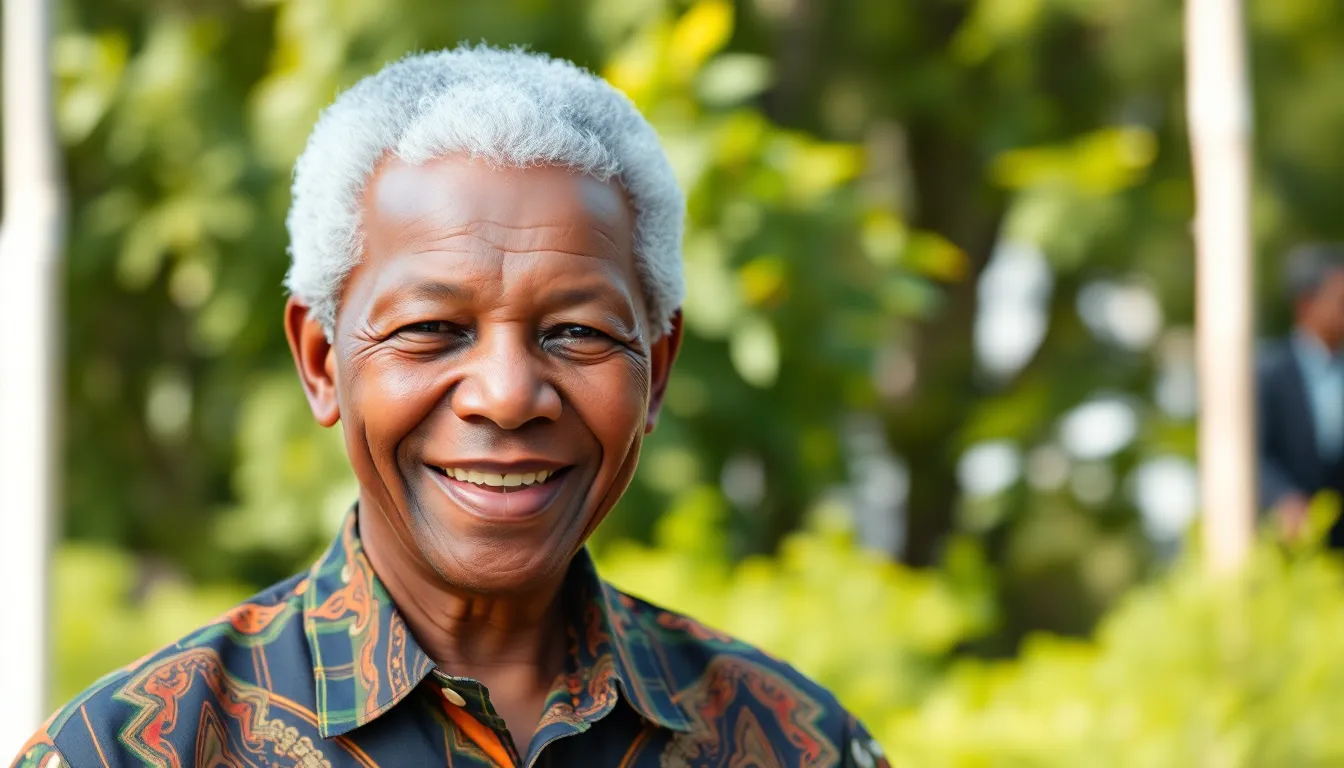Nelson Mandela’s 27-year imprisonment isn’t just a footnote in history; it’s a saga of resilience, defiance, and a sprinkle of irony. Imagine being locked away for nearly three decades for fighting against an unjust system. It sounds like the plot of a dramatic movie, but it was Mandela’s reality. He stood up against apartheid, a regime that made segregation look like child’s play, and for that, he paid a hefty price.
But why did it take so long for the world to recognize his struggle? The answer lies in the complexities of politics, power, and a society deeply entrenched in discrimination. Mandela’s story is more than just about imprisonment; it’s about the fight for freedom and equality. So buckle up as we dive into the reasons behind those long years behind bars and how they ultimately shaped a nation.
Table of Contents
ToggleHistorical Context of Apartheid
Apartheid defined a system of institutionalized racial segregation in South Africa. This discriminatory regime, instituted in 1948, enforced policies that marginalized non-white citizens, stripping them of their rights and keeping them in a cycle of poverty.
Definition of Apartheid
Apartheid means “apartness” in Afrikaans. This policy created a legal framework that segregated citizens based on race. Non-white populations faced restrictions in education, healthcare, and land ownership. The Group Areas Act assigned races to specific geographic regions, effectively limiting interaction. Routine discrimination permeated every aspect of life, influencing personal and professional relationships.
Key Events Leading to Mandela’s Arrest
Multiple events shaped the landscape that led to Mandela’s arrest. In 1960, the Sharpeville Massacre marked a turning point, where police killed 69 peaceful protesters opposing pass laws. This incident galvanized resistance movements. Subsequently, the formation of Umkhonto we Sizwe, a military wing of the African National Congress, involved Mandela in armed struggle. Authorities cracked down on opposition, leading to the 1961-1962 campaign of sabotage against government properties. Mandela’s arrest followed in 1962 after police captured him during a secret meeting of ANC leaders. The Rivonia Trial in 1964 found him guilty of sabotage, resulting in the lengthy prison sentence.
The Life of Nelson Mandela

Nelson Mandela’s life represents a journey marked by resilience and commitment to justice. His experiences shaped South Africa’s fight against apartheid.
Early Life and Education
Nelson Mandela was born on July 18, 1918, in the village of Mvezo, South Africa. His early education began at a local mission school, where he developed a passion for learning. He later attended the University of Fort Hare, an institution known for its progressive stance on education. Influenced by the ideas of freedom and equality, Mandela joined the African National Congress (ANC) in 1944 while earning a law degree at the University of Witwatersrand. These formative years fostered a deep understanding of the racial injustices surrounding him and laid the groundwork for his future activism.
Political Activism and Leadership
Mandela’s political activism took off in the 1940s, fueled by the harsh realities of apartheid. He quickly rose through the ANC’s ranks, becoming a key member of its leadership. In 1961, Mandela co-founded Umkhonto we Sizwe, the ANC’s military wing, emphasizing a shift toward armed resistance. His commitment to combating oppression led to his arrest in 1962 during an ANC meeting. The subsequent Rivonia Trial in 1964 drew international attention, highlighting the brutal nature of apartheid and solidifying Mandela’s role as a symbol of resistance. Through these efforts, he became a prominent figure advocating for justice and equality in South Africa.
The Arrest of Nelson Mandela
Nelson Mandela’s arrest marked a turning point in South Africa’s struggle against apartheid. His commitment to fighting racial oppression led to significant consequences for the nation.
Reasons for His Arrest
Organizing anti-apartheid protests motivated Mandela’s arrest. He played a crucial role within the African National Congress, advocating for armed resistance through Umkhonto we Sizwe. Government authorities labeled him a terrorist due to his involvement in sabotage activities. Rising tensions post-Sharpeville Massacre intensified the crackdown on dissent. The apartheid regime aimed to suppress any challenges to their authority, which included targeting key figures like Mandela.
Charges Against Him
Mandela faced multiple charges during the Rivonia Trial in 1964. Chief among them was sabotage, linked to his role in orchestrating attacks against government property. They accused him of conspiring to overthrow the state, emphasizing the threat he posed. The court also highlighted his leadership in Umkhonto we Sizwe, showcasing his commitment to armed struggle. Subsequently, he received a life sentence, casting a long shadow over his fight for freedom.
The Impact of Imprisonment
Mandela’s imprisonment sparked significant reactions both nationally and internationally. Within South Africa, many viewed him as a martyr for the anti-apartheid cause. His detention galvanized activists who rallied for his release, sparking several campaigns. Internationally, leaders and organizations condemned apartheid, often citing Mandela as a symbol of resistance. Global movements emerged, urging governments to impose sanctions against South Africa. Many artists, writers, and public figures advocated for his freedom, amplifying his influence beyond prison walls.
Changes in the anti-apartheid movement became evident during his years of imprisonment. Activists shifted strategies, with increased focus on international solidarity. The United Nations took decisive action, adopting resolutions denouncing apartheid and calling for economic sanctions. Influential figures within the African National Congress (ANC) emerged as leaders in Mandela’s absence. Furthermore, a new generation of activists, inspired by Mandela’s sacrifice, rose to prominence. The emphasis on grassroots organizing gained momentum, transforming public opinion and fostering a stronger resistance.
The Legacy of Mandela
Nelson Mandela’s imprisonment left a profound impact on the world, shaping the narrative of justice and equality. His experience highlights critical lessons for individuals and movements.
Lessons Learned from His Imprisonment
Imprisonment taught resilience and courage in the face of injustice. Activists saw that enduring hardship could strengthen resolve and unify a movement. Sacrifice became a potent symbol, inspiring generations to continue the fight for freedom. Mandela’s ability to maintain dignity and hope while incarcerated demonstrated the importance of inner strength. His story underscored the need for solidarity among oppressed communities. Despite physical confinement, he became a global icon for human rights, reminding everyone of the power of perseverance.
Influence on Future Generations
Future generations draw inspiration from Mandela’s legacy. His commitment to racial equality and justice played a pivotal role in shaping activism worldwide. Young leaders adopt his principles, using nonviolent approaches to confront injustice. Through education and awareness, Mandela’s story fosters a lasting impact. Activists today resonate with his messages of forgiveness and reconciliation, promoting healing in divided societies. His life exemplifies the lasting effects of courage on social justice movements, encouraging youth to advocate for change and equality in contemporary struggles.
Nelson Mandela’s 27 years in prison serve as a powerful testament to the struggle against apartheid and the pursuit of justice. His unwavering commitment to equality and freedom not only inspired a nation but also resonated globally, igniting movements for change. The legacy of his imprisonment continues to influence contemporary activists, reminding them of the importance of resilience in the face of oppression. Mandela’s journey underscores the significance of hope and determination in the fight for social justice, encouraging future generations to challenge injustice and advocate for a more equitable world. His story remains a beacon of inspiration, illustrating that even in the darkest times, the spirit of resistance can prevail.


